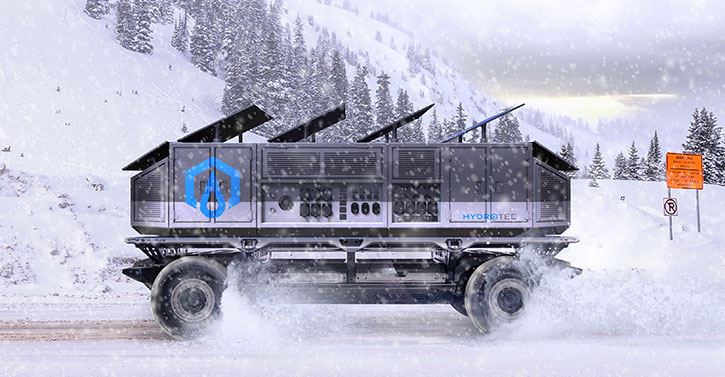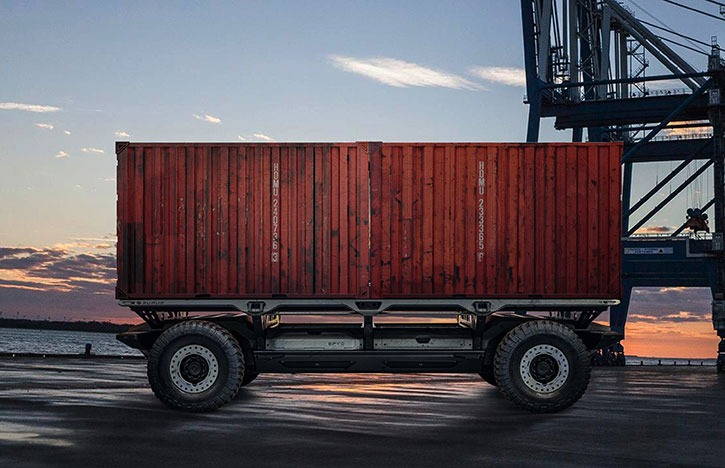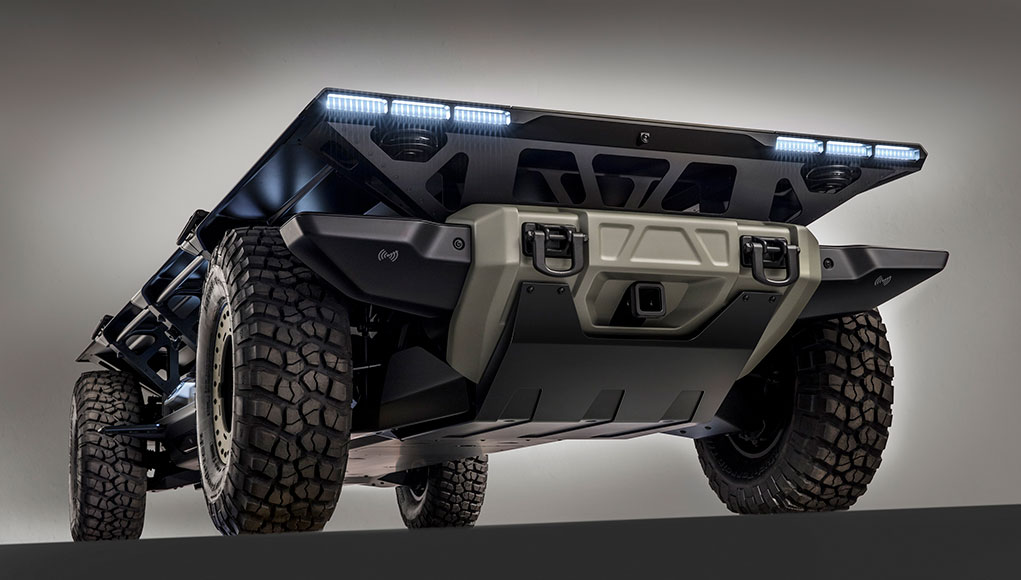GM’s proposes a versatile, electrically powered platform that uses hydrogen fuel-cell technology to support energy-dependent military applications such as sensor platforms, high energy lasers, command posts, communications sites, field medical facilities, and emergency power and water generation facilities.
The military user relies on fossil fuels for all most of its logistical support – transportation and energy production. The trend in the commercial world is toward clean, emission-free transportation is bound to present new realities to military logistics, and open new opportunities as the Army moves to rely more and more on electrical energy.
For the commercial market, clean, zero-emission energy calls for the use of non-pollutant fuels, such as hydrogen, that can be produced (‘reformed’) from hydrocarbon or other fuels. As liquid fuels, hydrogen-powered vehicles can be refueled in the field, thus extend the operational range indefinitely, wherever hydrogen refueling facilities are available.
In contrast, battery operated vehicles would enable users to top-up their vehicles at their base, even from renewable sources, thus adapting to operations within a limited range. Heavier electrical-powered vehicles, such as the Tesla Semi truck soon to be unveiled, are expected to offer longer operating range and higher torque that will also open new applications for military users, particularly in semi-autonomous supply convoys that will be able to maximize the use of autonomous transportation, relying on minimal or no human presence.
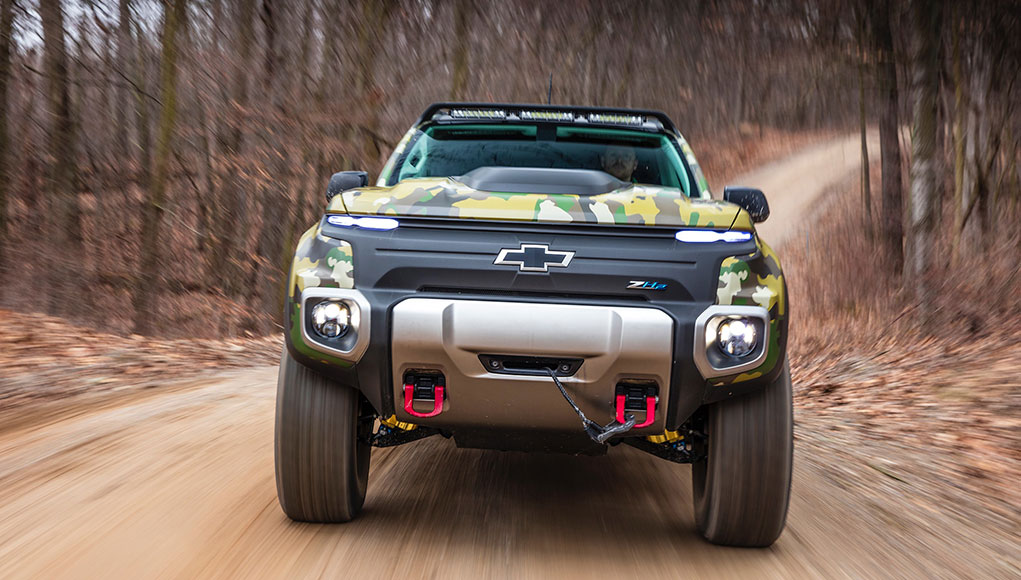
In the past 18 months General Motors (GM) and the U.S. Army Tank Automotive Research, Development, and Engineering Center (TARDEC) collaborated to develop and test the Chevrolet Colorado ZH2. This test vehicle evolved from contract to concept in less than a year. The Army received the first vehicle in April 2017 and has been testing it since. ZH2 is a hydrogen fuel-cell powered, off-road capable midsize pickup truck.
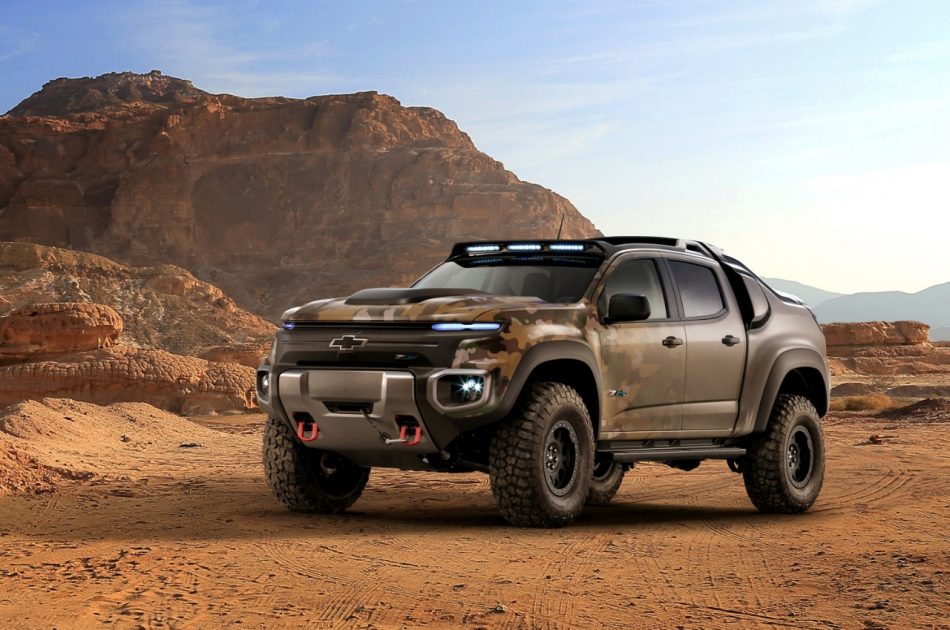
Last week GM introduced a new member in its hydrogen-powered vehicle family – Silent Utility Rover Universal Superstructure (SURUS) – a new concept for manned/unmanned “chassis” that extends the ZH2 capabilities to a new level. The new platform leverages many of GM’s commercial vehicle technologies developed for the forthcoming autonomous transportation revolution. These include the Hydrotec fuel cell system and autonomous vehicle operation. SURUS will be reconfigurable in the field to support different missions and uses.

The basic SURUS chassis is designed for off-road mobility, using four in-hub electrical motors providing instantaneous high torque at all speeds and RPM. Field refueling will enable logisticians to support field operations at extended range, with refueling support similar to those used with fossil fuels. Apart from field mobility, the SURUS platform will also support field units with exportable power and water generation.
As for ZH2, testing is progressing well. In addition to the hydrogen fuel cell propulsion system and its associated battery, ZH2 has a specially modified suspension that helps the vehicle negotiate rough terrain. Through these tests, ZH2 demonstrated high stealth and versatility, and efficiency. Coupled with an onboard battery, the fuel cell system delivered 174 HP of sustainable, enough to negotiate rough terrain and enable troops to get closer to enemy positions, thanks to the low acoustic and thermal signature of the vehicle. Thes 174 horsepowers are converted to 236 lb.-ft. (33 kg/m) of instantaneous torque delivered to the transfer case and a 4-wheel drive system with front- and rear- electronic locking differentials. Off-road performance is further enabled by proprietary damper technology that provides body control for trail running and expanded wheel travel for rock crawling.
In addition, the vehicle could provide 25 kW of sustainable electrical power (up to 50kW peak power), enough to power all mission systems on board. ZH2 also has an Exportable Power Take-Off unit (EPTO) that allows the fuel cell to power activity away from the vehicle. This capability is used to support deployed facilities such as command posts or field medical facilities, where electrical power is produced using generators. The system can power a subdivision, tools at a worksite, communications equipment or a small field hospital for hours. Thanks to its ‘zero emission’ propulsion, ZH2 also produced two gallons of drinking water – a useful benefit for deployed forces.

